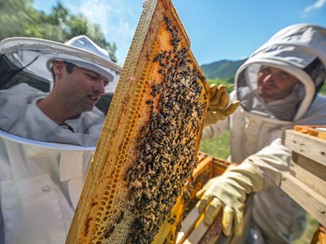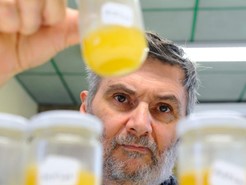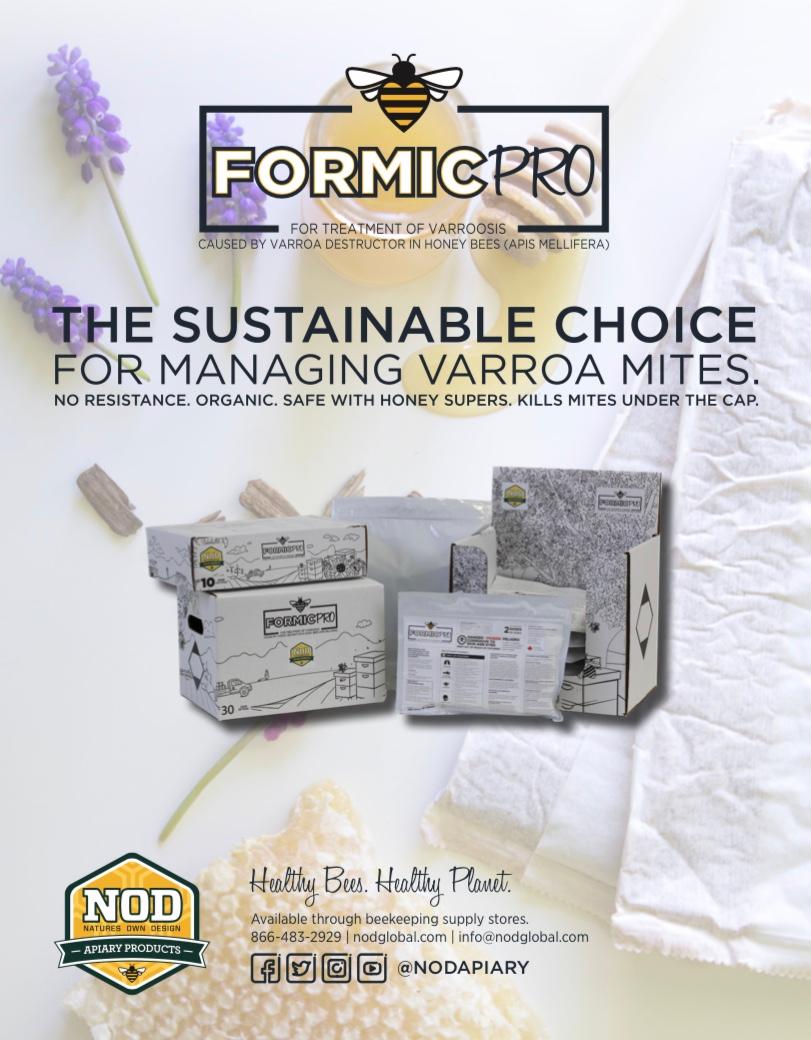Honey is one of the most faked foods in the world, and the US government isn’t doing much to fix it
Cody Copeland
Beekeepers work in maintenance and extraction of honey from hives on August 10, 2019 in Girona, Spain. Manuel Medir/Getty Images
• Honey is the third-most-faked food in the world, behind milk and olive oil, according to compliance management company Decernis.
• Fake honey is bad for beekeepers, and also means that bees spend more time pollinating, which wears them out.
• “Honey launderers” fool authenticity tests by making chemical modifications, making it hard to trace where the honey came from.
• The testing has gotten better than the 2013 “Honeygate” scandal where the Justice Department went after honey launderers.
• But the industry still doesn’t always use sophisticated tests that can see through chemical modifications, and consumers have to rely on toothless government regulators.
In February 2013, the Justice Department charged two major honey importers in “Operation Honeygate.”
The importers — Honey Solutions and Groeb Farms — shipped fake or adulterated Chinese honey through other countries in Asia and Europe before sending them to the US.
The honey-laundering scheme, which helped the companies avoid $180 million in shipping duties, hid the honey’s true origin, leaving few to suspect that it wasn’t real.
It was the biggest incident of food fraud in US history.
More than seven years later, a lot of our honey is still fake.
According to the Food Fraud Database maintained by the compliance management company Decernis, it’s the third-most-faked food behind milk and olive oil.
There’s no reason to think that fake or adulterated honey is a threat to public health, but it’s still a problem.
The manufacturers either dilute real honey with syrup derived from plants, like high-fructose corn syrup or beet syrup. Or they can chemically modify the sugars in those syrups to make them look like real honey.
Undercut by prices that can dip below half their operating costs, honey producers bear the economic brunt.
“Adulterated or fake honey depresses the price for real honey, making honey production unprofitable,” Kelvin Adee, president of the American Honey Producers Association, told Insider. “Beekeepers have to turn to other sources of income such as packing and retailing honey themselves, raising queens/hives for sale or pollination services. Honey production by itself is not a sustainable option.”
Fake honey is bad for beekeepers and bad for bees
The exact amount of fake honey in the world is up for debate. An analysis by the Honey Authenticity Project, an association of activists and industry members, places the number of fake or adulterated honey at 33%. A 2018 study of honey for sale in Australia found that 27% of the products tested were faked or had other ingredients mixed in.
US-specific numbers are harder to come by, but one lawyer, who’s behind several class-action lawsuits accusing honey brands of fraud, puts the figure as high as 70%.
View of special cups where queen bees are raised to be later introduced into hives, making them more productive, in Esteli, Nicaragua, on December 21, 2019. INTI OCON/AFP via Getty Images
Earlier this year, Vice tested honey brands in several US grocery stores and found that many of them were adulterated. But the threat extends beyond those little golden bears lining the supermarket shelves, Adee said.
Honey plays a huge role in the American diet, with about 400 million pounds of it ending up in our food every year, much of it in processed foods like cereal.
Beekeepers in the United Kingdom have been hit particularly hard. The UK received 47% of Europe’s honey imports from China in 2018, but a Honey Authenticity Project lab analysis of 11 supermarket brands found that none complied with EU labeling standards.
Adulterated honey also ultimately drives honey prices down, beekeepers say. Some beekeepers find it’s more worthwhile to have their bees focus on pollination rather than honey production. It’s a vicious cycle that leads to less authentic honey in the market.
“When the cost of production is around $2, it’s really tough to compete against prices that are well under a dollar,” Adee told Insider.
“There are beekeepers who have decided to call it quits and leave the industry,” he added.
And it’s bad for bees, too: With pollination, bees travel more, putting hives at risk of exposure to new diseases.
How ‘honey laundering’ works
“Honey laundering” became widespread when Chinese laboratories began modifying high-fructose corn syrups to make them look like pure honey.
The sugars in these syrups — known as C4 sugars — became popular for honey counterfeiters in the 1970s, with the invention of high-fructose corn syrup, according to Richard Anderson, director of Siratech, a private lab in Texas that detects fake and adulterated honey.
But they were soon easily detected in tests, so honey counterfeiters modified their methods to use syrups developed from plants with C3 sugars, like rice, beets, or cassava.
“[Regulators] started looking for it and catching people, so they shifted over to other types of syrups,” Anderson said.
Paul Schweitzer, head of the French beekeeping study center in Moselle (CETAM) and a pollen specialist, holds honey jars, on May 17, 2013 in Guenange, eastern France. Fake labels, traffic of the country-of-origin, addition of sugar syrup. JEAN-CHRISTOPHE VERHAEGEN/AFP via Getty Images
The adulterated syrups can be used to dilute a smaller batch of real honey. They can also be fed directly to bees, replacing flower nectar, Anderson told Insider.
Earlier honey authentication tests analyzed the pollen inside honey and traced them back to their source. But some honey launderers have gotten smart, treating honey so that it’s difficult to trace. Anderson’s lab runs SIRA tests, which are sophisticated enough to catch the large majority of attempts to falsify honey.
“They either buy pollens or blend custom made syrups with honey that already has pollen in it,” Adee said. “It seems like every time there’s a new test that comes out, it’s not long that they’ll find a way that they can beat it.”
To read the complete article go to; https://www.insider.com/fake-honey-problems-how-it-works-2020-9
________________________________________________________________________________











